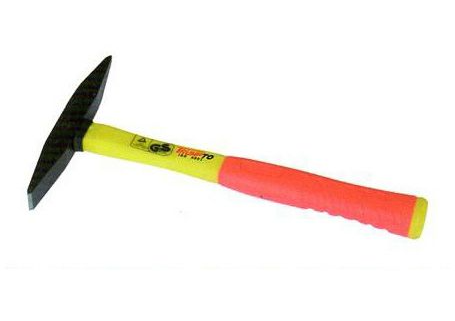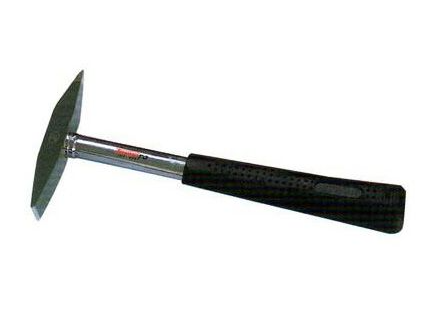A chipping hammer is an essential tool in arc welding, specifically used for cleaning and preparing the weld area. Here are the main functions and details about the role of a chipping hammer in arc welding:
What Is a Chipping Hammer Used for in Arc Welding?
In arc welding, a chipping hammer is an indispensable tool that ensures a clean and safe weld area by effectively removing slag and spatter. Whether you're working with stick welding (SMAW) or flux-cored arc welding (FCAW), choosing the right arc welding chipping hammer directly affects the cleanliness, weld quality, and inspection readiness of your welds.
Functions of a Chipping Hammer in Arc Welding
Slag Removal:
Process: During the welding process, the flux in the electrode melts and forms a protective layer over the molten weld pool. Once the weld cools, this slag solidifies on top of the weld. The chipping hammer is used to break and chip away this hardened slag.

French Type Chipping Hammer with Colour Plastic-Coating Handle
Cleaning and Inspection:
Surface Preparation: In some cases, after slag removal, further cleaning with a wire brush (often attached to the opposite end of the chipping hammer) is necessary to prepare the surface for additional welding passes or for final inspection and finishing.
British Type Chipping Hammer for Sale
Spatter Removal:
Surface Cleanup: Arc welding, particularly shielded metal arc welding (SMAW) and flux-cored arc welding (FCAW), can produce spatter — small droplets of molten metal that scatter and adhere to the surrounding metal surfaces. The pointed end of the chipping hammer is effective in removing these spatter deposits.

French Type Chipping Hammer with Tubular Steel Handle
Design and Features
Dual-Ended Tool:
Chisel End: One end of the chipping hammer is typically flat and chisel-shaped, designed for scraping and chipping off larger chunks of slag.
Pointed End: The other end is pointed, allowing for more precise removal of slag in tight spots and for dealing with stubborn deposits.
Durability: Chipping hammers are made from hardened steel to withstand the impact and abrasion of chipping away slag and spatter.
Handle Design: They often feature a spring handle or a rubber grip to absorb shock and reduce hand fatigue, making it more comfortable to use over extended periods.
Recommended Reading: Selecting the Right Chipping Hammer
Importance in the Welding Process
Weld Quality: Proper slag removal is critical for ensuring that subsequent weld passes properly fuse with the previous ones and that there are no inclusions or defects hidden beneath the slag.
Aesthetic Finish: Removing slag and spatter results in a cleaner and more professional-looking weld, which is important for the final appearance of the welded structure.
Safety: By removing slag and spatter, the welder ensures that the workpiece is safe to handle and reduces the risk of injuries from sharp or jagged edges.
Conclusion
The chipping hammer is a fundamental tool in arc welding, indispensable for slag and spatter removal. Its use is crucial in achieving clean, high-quality welds, ensuring proper fusion between weld passes, and preparing the welded area for inspection and finishing. By effectively removing slag, a chipping hammer helps maintain the structural integrity and aesthetic quality of welded joints.







